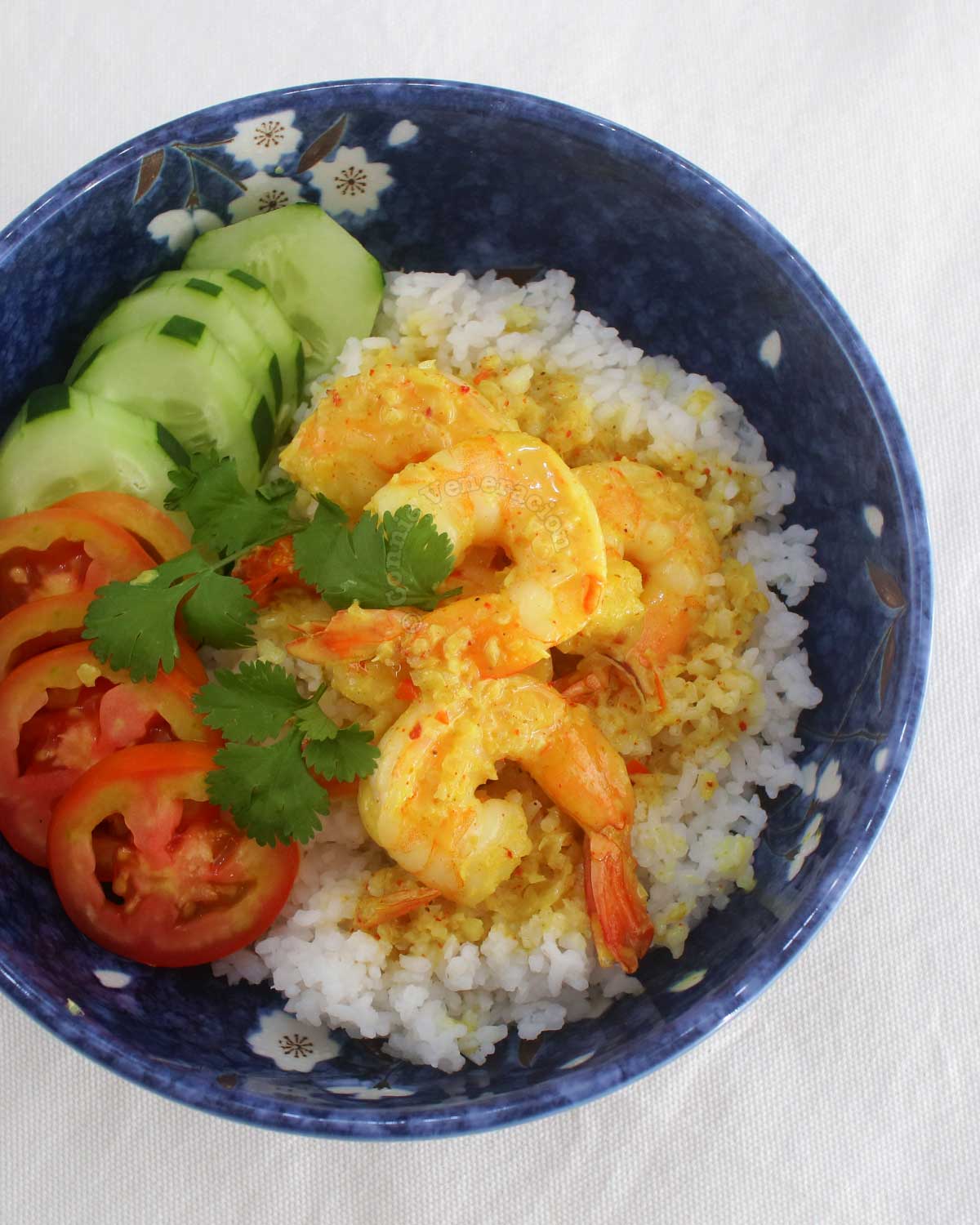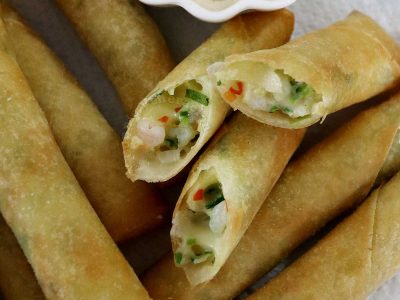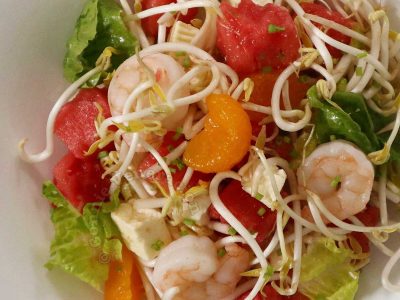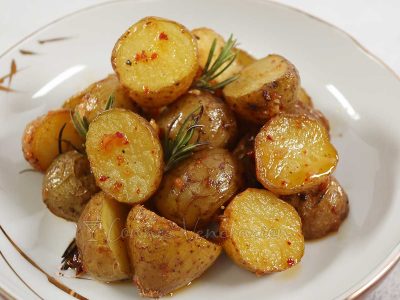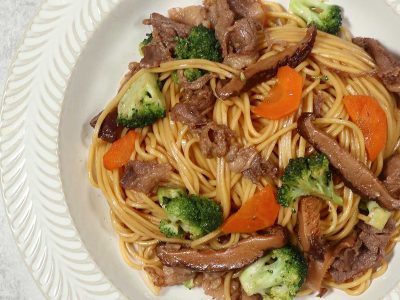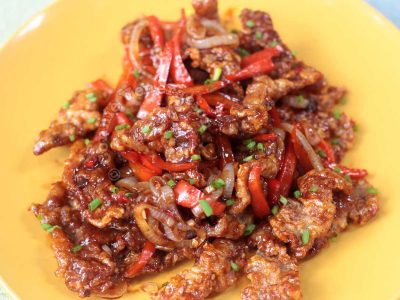Who doesn’t love fast-cooking meals, right? I know I do. While the rice cooked, I did the prep for the shrimp curry. By the time I was done cooking, the rice was perfectly fluffy and all I needed to do was assemble the rice bowls.
But fast doesn’t mean taking short cuts with the curry sauce. Without it, this dish would just have been large shrimps swimming in a creamy yellow sauce. Creaminess is not enough. Store-bought curry powder needs help to make a good sauce. That means starting with fresh spices to create a good flavor base.
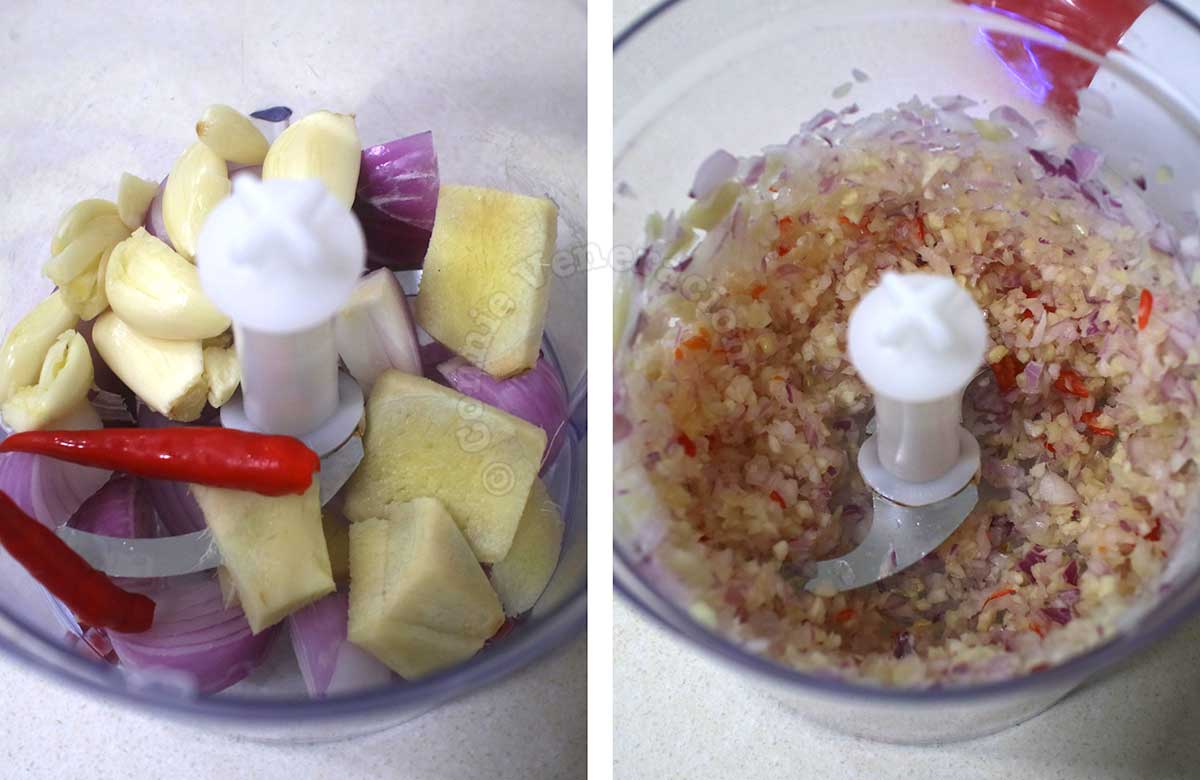
Using a mortar and pestle to grind the spices is traditional. But when I want to cut down on the prep time, I turn to my mini food processor to do the job in seconds. Otherwise, my family would be starving by the time I start the actual cooking.
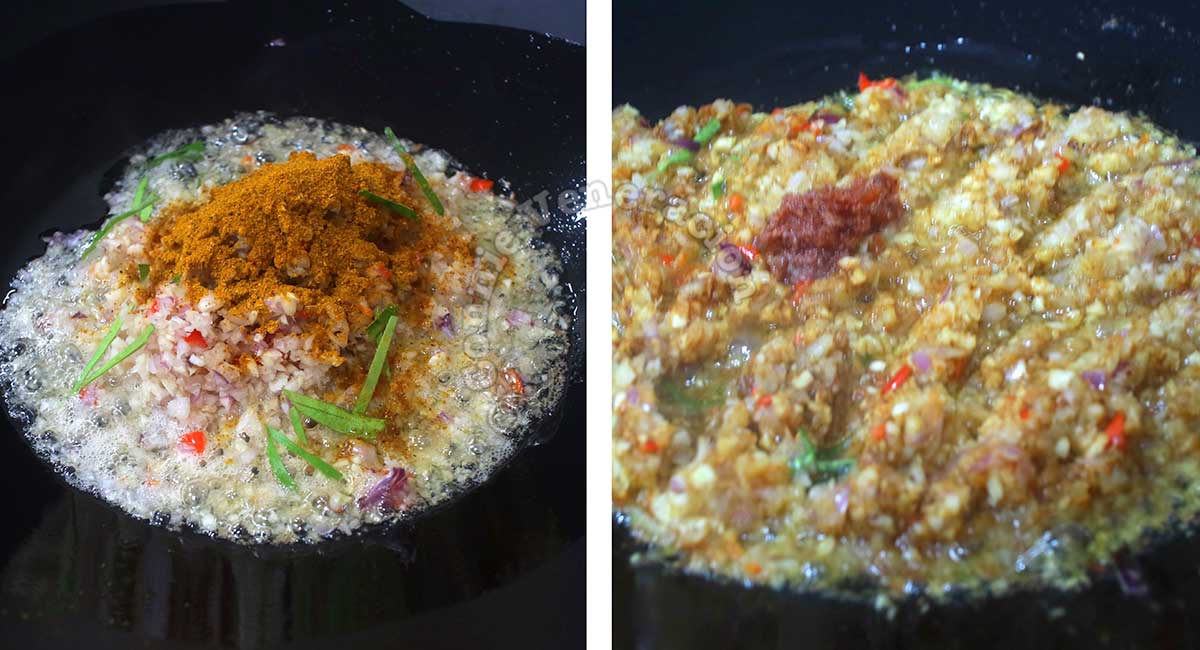
The longest part of the cooking is sauteeing the shallots, garlic, ginger and chilies with a pair of julienned kaffir lime leaves and a teaspoon of shrimp paste. This has to be done over medium-low heat to really coax out the flavors. Five minutes are usually enough but it won’t hurt if you wait for the ground spices to brown a bit.
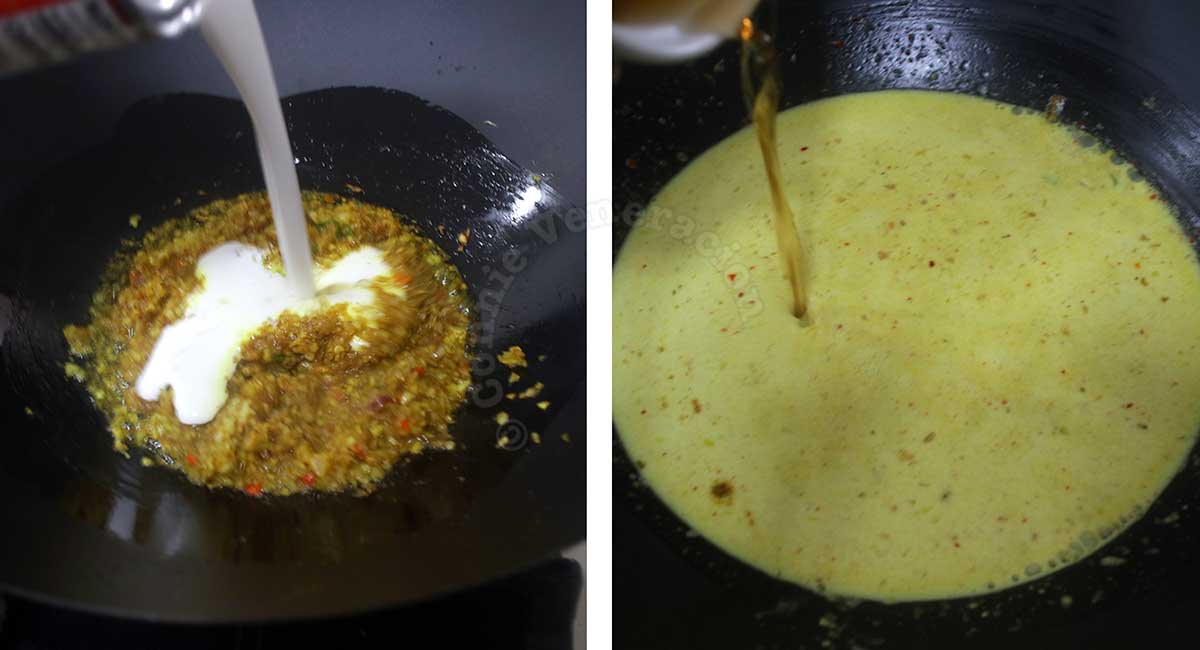
To the sauteed spices, add coconut cream. It is during this stage that I season the sauce. I drizzle in about two tablespoonfuls of fish sauce right after pouring in the coconut cream. I wait for the sauce to boil gently for a minute before tasting it and adding more fish sauce until I get the right balance. Fish sauce is salty, coconut cream is naturally sweet, so, just the right amount of sauce is the key.
But because the shrimps will soak up some of that saltiness, I like the sauce to taste a bit more salty than is necessary before I add the shrimps.
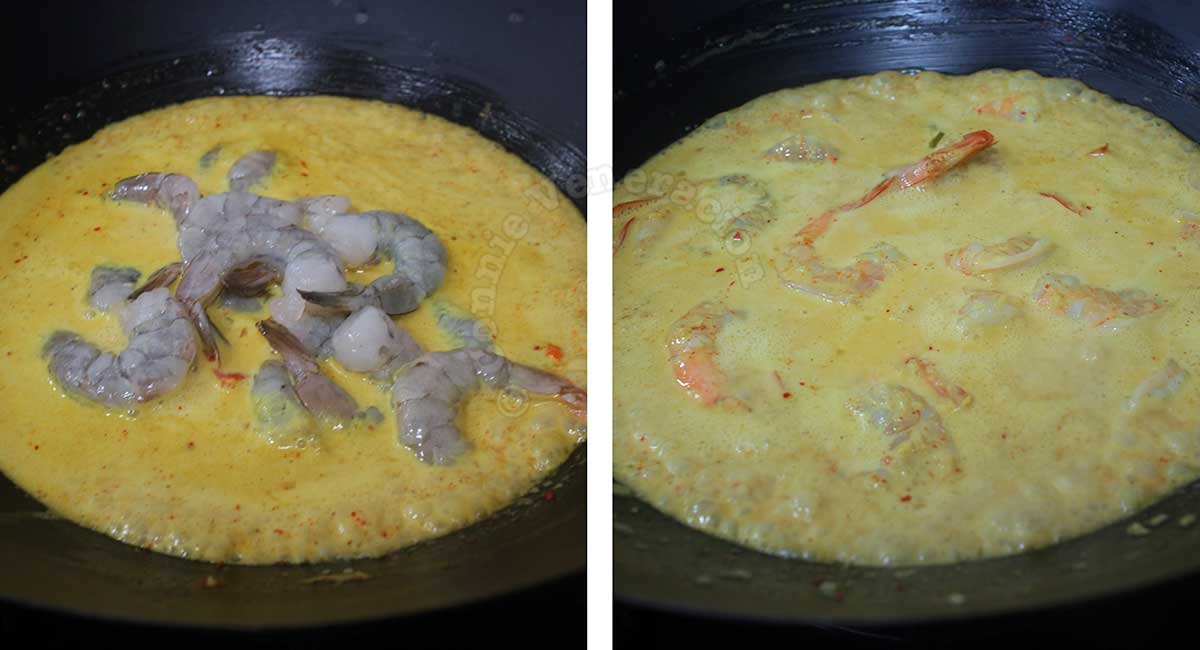
The last stage of cooking is dropping in the shrimps and letting them cook in the simmering sauce. Shrimps take only a couple of minutes to cook. How many minutes exactly depends on their size. Once they change color, I count one minute and turn off the stove. I give the sauce a final taste, adjust the seasonings, if needed, before assembling the shrimp curry rice bowls.
20-minute shrimp curry rice bowl
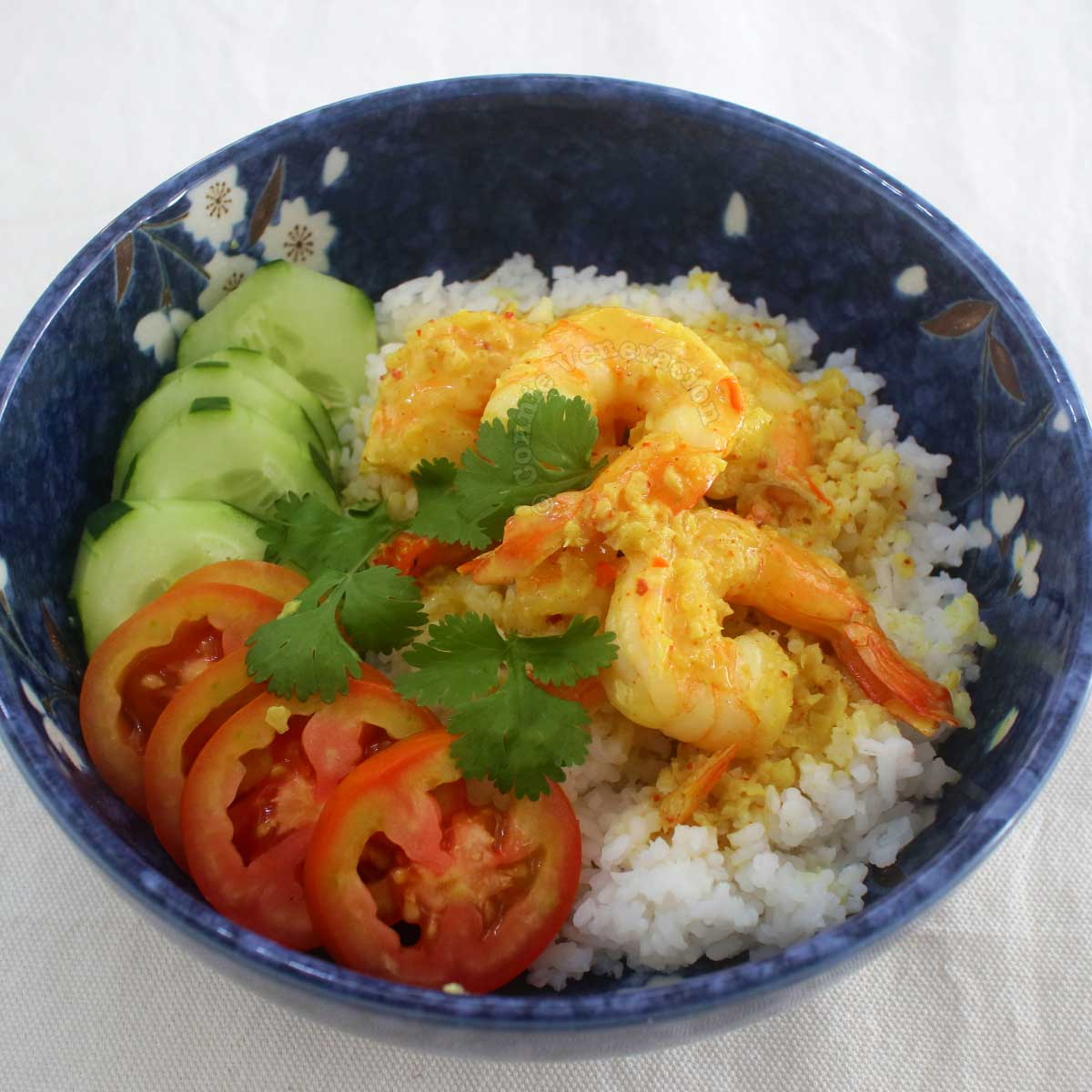
Ingredients
- 500 grams large shrimps
Spice base
- 2 shallots peeled and roughly chopped
- 8 cloves garlic peeled
- 1 two-inch knob ginger peeled and sliced
- 2 bird's eye chilies stems discarded
- 3 tablespoons cooking oil
- 2 tablespoons curry powder
- 1 pair kaffir lime leaves thinly sliced (mid rib discarded)
- 1 teaspoon shrimp paste
Curry sauce
- 2 cups coconut cream
- fish sauce to taste
To serve
- cooked rice
- sliced cucumber
- sliced tomato
- cilantro to garnish
Instructions
- Rinse the shrimps, drain spread on a rack to allow water to drip off.
- Place the shallots, garlic, ginger and chilies in a mini food processor, and grind as finely as you can.
- Heat the cooking oil in a wok or shallow pan.
- Saute (medium-low heat) the ground spices, curry powder, kaffir lime leaves and shrimp sauce for about five minutes or just until the solids are starting to separate from the oil.
- Turn up the heat to high, pour in the coconut cream, stir in two tablespoons fish sauce and allow to boil for a minute.
- Allow the sauce to boil gently for a minute, taste and add more fish sauce to get a good balance between salty and sweet.
- Stir in the shrimps.
- Cook, uncovered, just until the shrimps change color.
- Turn off the heat and leave the shrimps to cook in the residual heat for another minute.
- Taste the sauce, add more fish sauce, if needed.
- Ladle rice into bowls, arrange the shrimps on top and drizzle in curry sauce.
- Arrange cucumber and tomato slices on the side, garnish with cilantro and serve your shrimp curry rice bowl.

